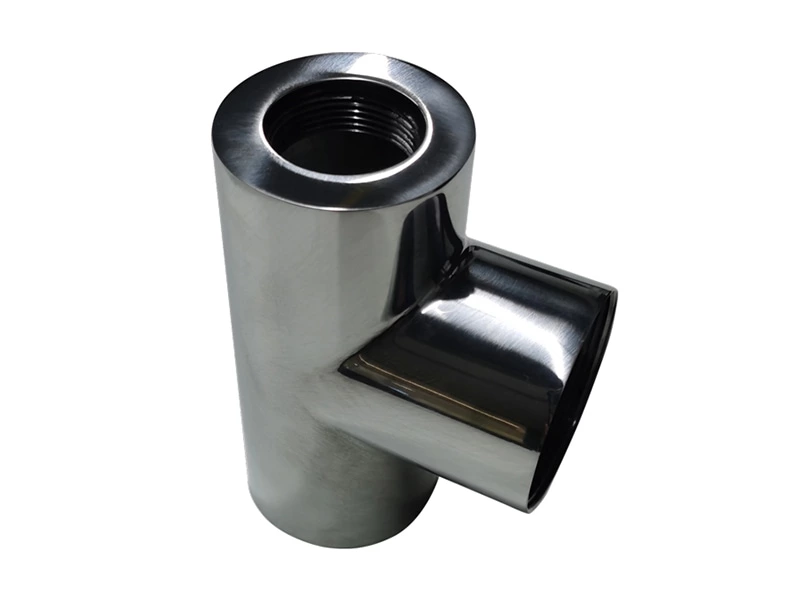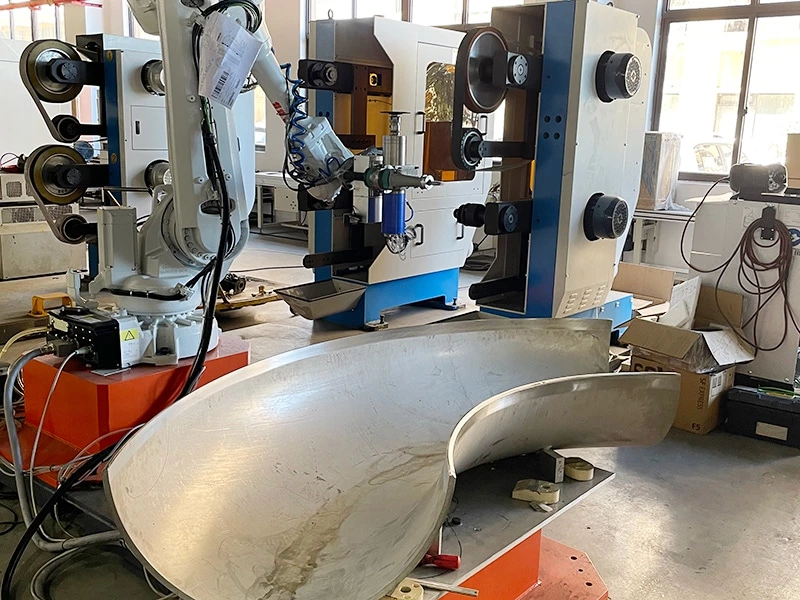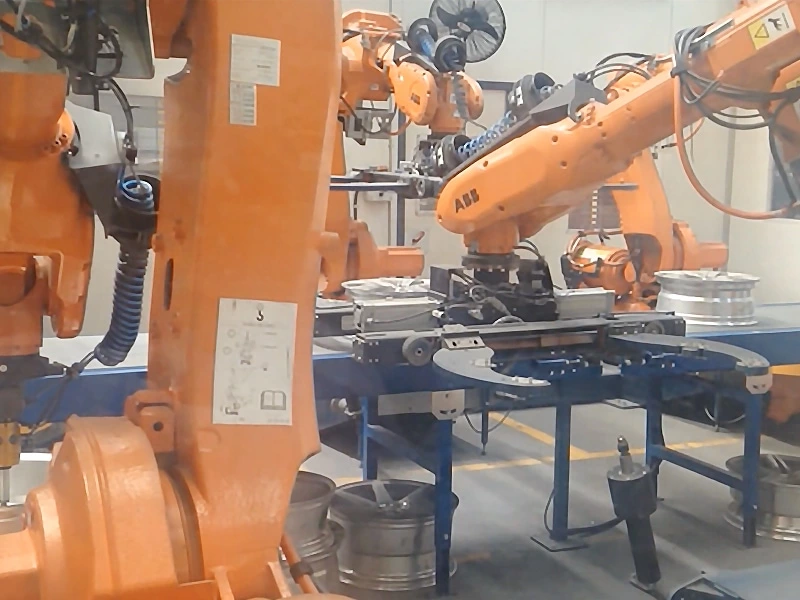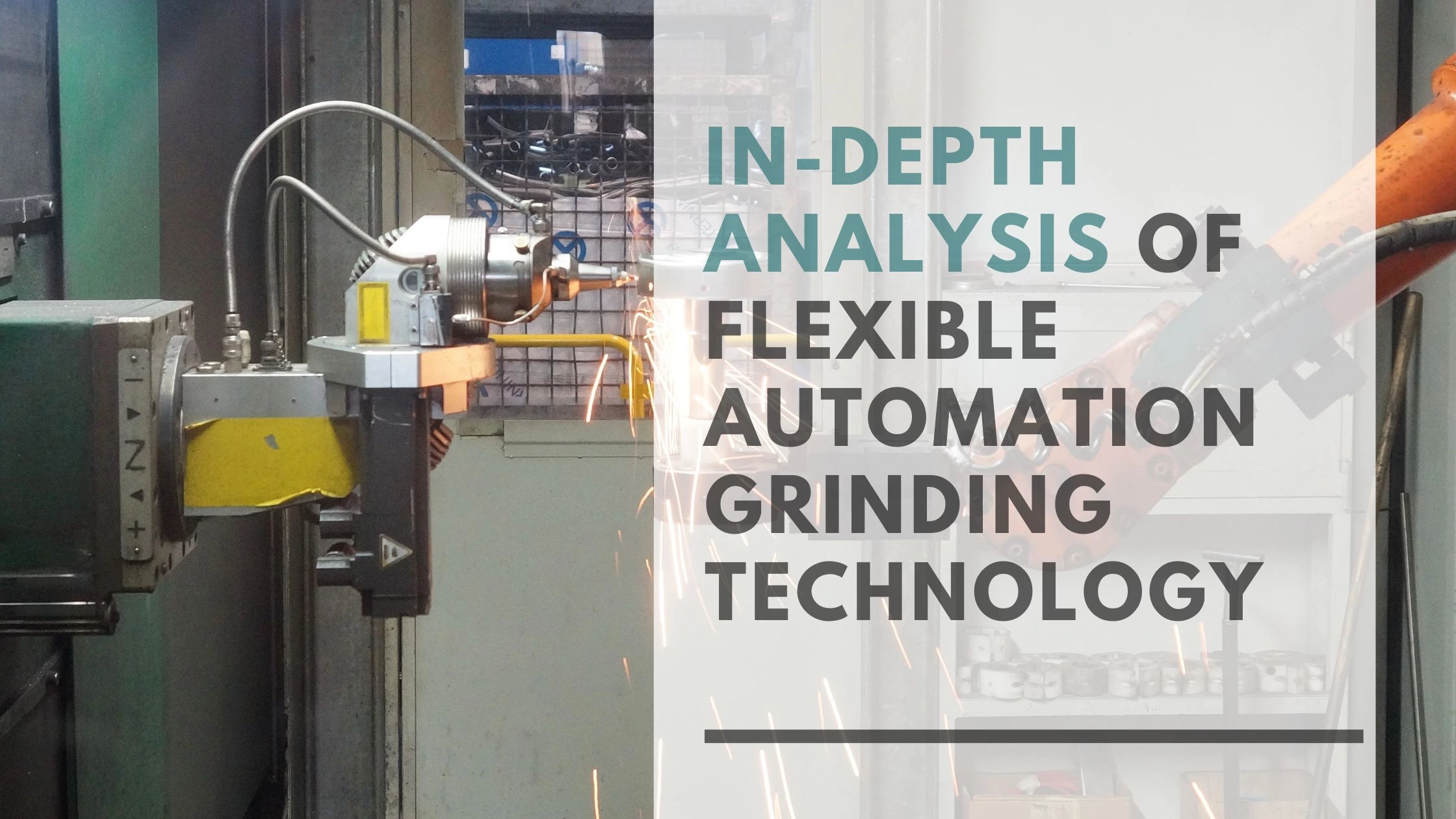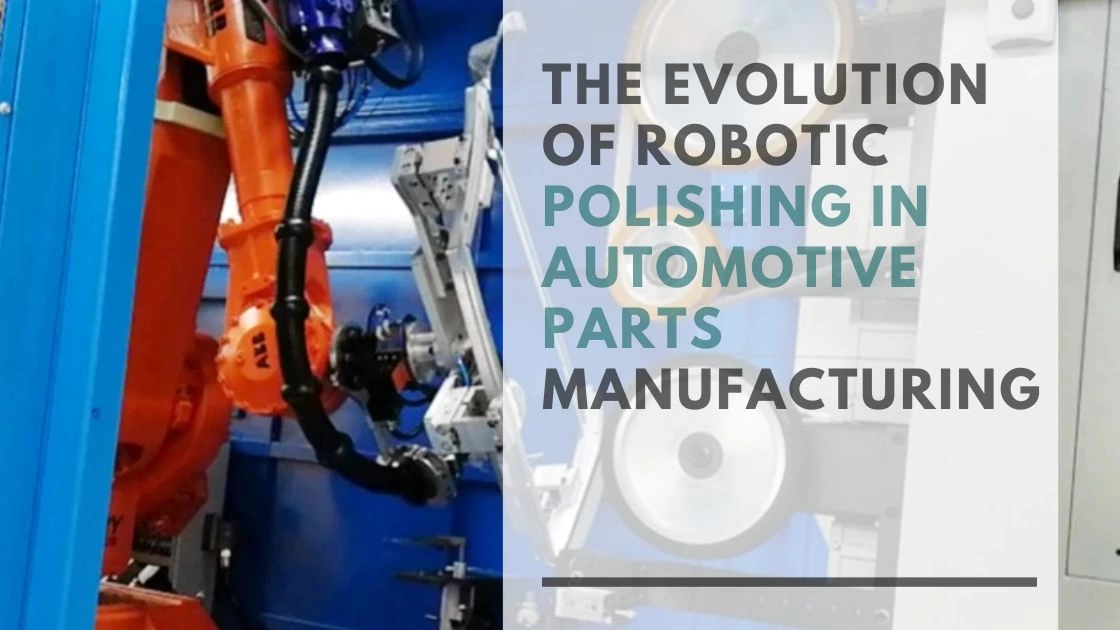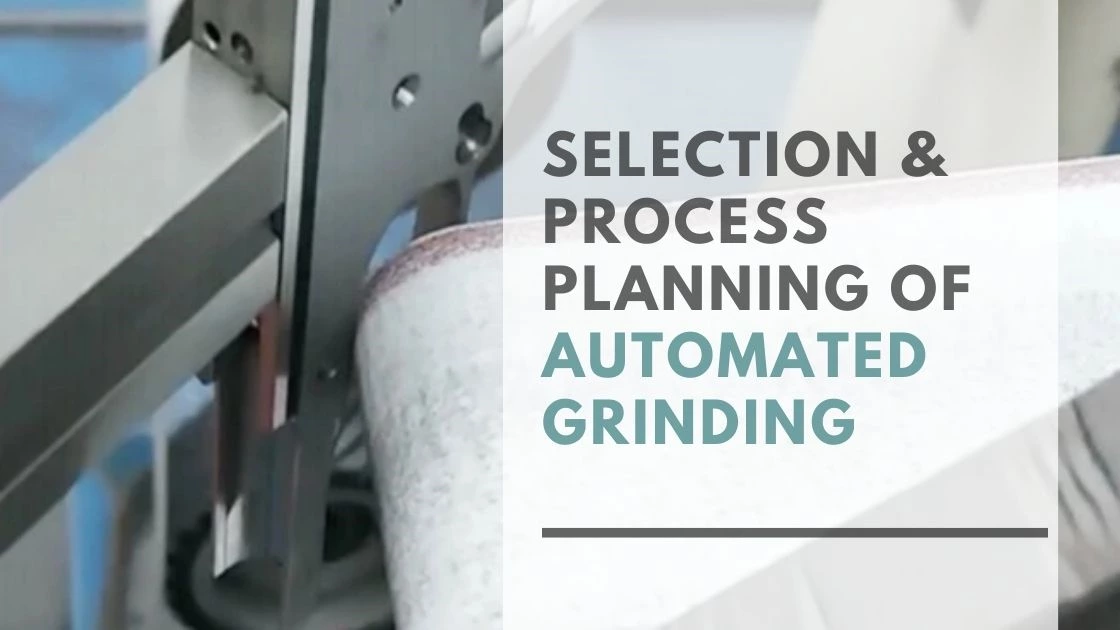Application of Robotic Grinding Systems in Automotive Parts Manufacturing
In automotive component manufacturing, grinding and polishing are crucial processes that directly impact product surface quality, dimensional precision, and aesthetic appearance. With the evolution of smart manufacturing and higher standards for product consistency, traditional manual grinding methods are gradually being phased out due to limitations in efficiency, repeatability, and worker safety. Robotic grinding systems have emerged as the go-to solution for automating surface treatment in complex automotive production lines.
1. Industry Challenges: Complexity, Precision, and Continuous Operation
Modern automotive parts—such as aluminum wheels, bumper brackets, die-cast housings, and luggage racks—are increasingly complex in geometry and material composition. These components often feature multi-angled, curved surfaces that are difficult to handle through manual grinding. Moreover, high production volumes and takt-time constraints in assembly lines demand consistent and uninterrupted finishing capabilities.
Manual methods, while flexible, are prone to quality inconsistencies, operator fatigue, and safety hazards due to dust and vibration. This makes robotic grinding a natural fit for next-generation manufacturing lines.
As the automotive sector increasingly adopts lightweight materials (such as aluminum and magnesium alloys) and high-performance composites, the tolerance margins for post-machining finishing are shrinking. Traditional grinding setups cannot keep up with this trend due to the lack of flexibility and process standardization. A robot, on the other hand, can adapt to variable shapes, surface profiles, and material types with configurable parameters—ensuring consistency and traceability.
2. System Architecture: Modular, Scalable, and Integrated
A fully functional robotic grinding system for automotive use typically consists of:
- Six-axis industrial robot (e.g. FANUC, KUKA, ABB) with payloads from 20 to 60 kg
- End-of-arm tools: compliant floating heads or electric spindles with automatic tool change capability
- Multi-station grinding and polishing units: sanding belts, buffing wheels, wax spraying modules
- 3D vision systems: for part recognition, positioning, and deformation compensation
- Closed-loop control system: ensures constant grinding force and compensates for tool wear
- Offline programming and simulation platform: supports rapid program deployment for multiple product types
What distinguishes a mature system from a basic one is the integration of force-feedback mechanisms and a digital twin of the grinding process. The robotic system doesn’t merely follow a programmed path—it actively senses the contact condition and dynamically adjusts the grinding parameters in real time.
3. Key Process Control Features
Advanced robotic grinding systems are not just about replacing labor—they also enhance precision and repeatability. Core technical features include:
- Constant force control: maintains stable grinding pressure within ±0.5 N
- 3D adaptive path compensation: corrects for part deformation and placement variation
- Tool wear detection and compensation: maintains quality and reduces downtime
- Real-time data logging: traceability of finish quality and operational performance
- Vision-based alignment: ensures accuracy even for irregular and asymmetrical parts
- Programmable parameters: torque, speed, approach angle, and dwell time can be controlled per material type
These process innovations allow for intelligent surface treatment, especially for parts with complex contours or stringent dimensional tolerances. The system can detect early wear or deviation from set parameters and alert the operator before a defect occurs—minimizing rework and scrap.
4. Use Cases in Automotive Manufacturing
Robotic grinding systems are widely deployed across various automotive components. Their adaptability makes them especially effective in processing:
a) Wheels and Rims
Aluminum and magnesium wheels often require burr removal, edge rounding, and mirror polishing. Robots can achieve a consistent surface finish while compensating for batch-to-batch geometry differences.
b) Car Body Accessories
Bumpers, luggage racks, trim pieces, and door handles are often made of plastic or mixed materials. Robotic tools can seamlessly transition from sanding to polishing in one cycle.
c) Powertrain Components
Engine blocks, cylinder heads, differential housings, and gearboxes benefit from robotic grinding due to their size, weight, and complex internal geometries. Automatic tool change and force sensing are essential here.
d) EV Components and Pressure Die Castings
Electric drive housings and battery module parts require high-precision deburring and tolerance control. Robots equipped with vision and force-feedback ensure quality standards below 0.1mm variance.
e) Chassis and Suspension Parts
Steering knuckles, brake calipers, and axle components must have clean surfaces for reliable performance. Robotic grinding ensures sharp edges and excess material are removed consistently.
5. Measurable Benefits and ROI
Deploying robotic grinding systems can bring significant gains:
- Labor efficiency: One robot can handle the workload of 5–10 operators
- Output consistency: Improves product uniformity and aesthetics across batches
- Defect reduction: Integrated sensors and logic reduce scrap and rework by 30–50%
- Cost savings: Lower tool consumption, less waste, and minimal downtime
- Safety improvement: Reduces operator exposure to dust, vibration, and repetitive motion injuries
- Data integration: Quality metrics and runtime parameters are recorded for process optimization and auditing
Most robotic grinding projects achieve breakeven in 12 to 18 months, depending on production scale and part complexity.
6. Integration with Smart Manufacturing Environments
Modern robotic grinding systems are not standalone islands—they are designed for seamless integration with Industry 4.0 environments:
- MES and ERP Connectivity: Synchronize with scheduling, inventory, and traceability systems
- Edge Computing: Collect and analyze data at the machine level for predictive maintenance
- AI-Powered Optimization: Machine learning algorithms continuously refine grinding parameters
- Digital Twins: Simulate grinding operations virtually before deployment
- Cloud-Based Monitoring: Allow operators and engineers to monitor system health remotely
This digital infrastructure makes robotic grinding not just a cost-saving initiative but a strategic enabler of smart factories.
Final Thoughts
Surface finishing is often overlooked in the rush to automate automotive manufacturing—but it plays a critical role in brand perception, quality assurance, and compliance. Robotic grinding systems represent a mature, high-value solution for companies seeking to enhance productivity, reduce operational risks, and meet rising quality demands.
By partnering with an experienced system integrator, automotive manufacturers can unlock the full potential of robotic surface finishing—transforming it from a bottleneck to a competitive advantage.
Explore more robotic grinding and deburring solutions at our official site:
www.kingstonerobotec.com

